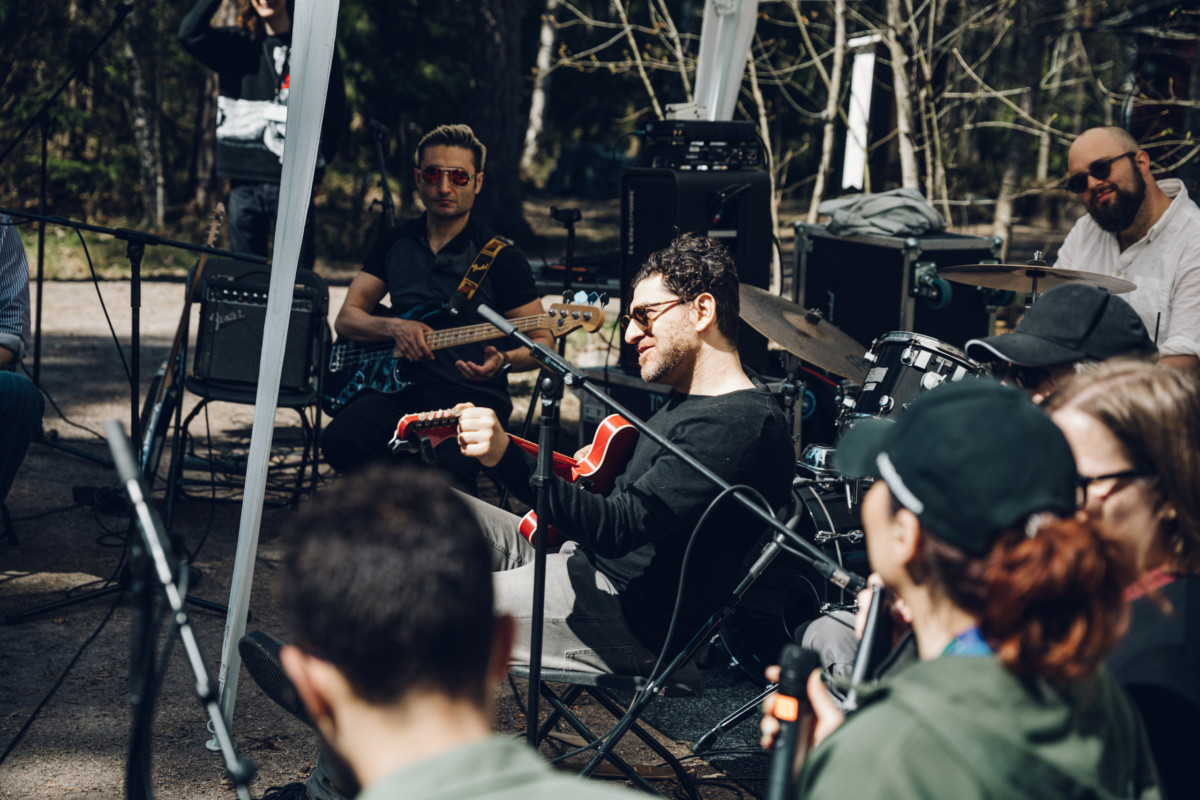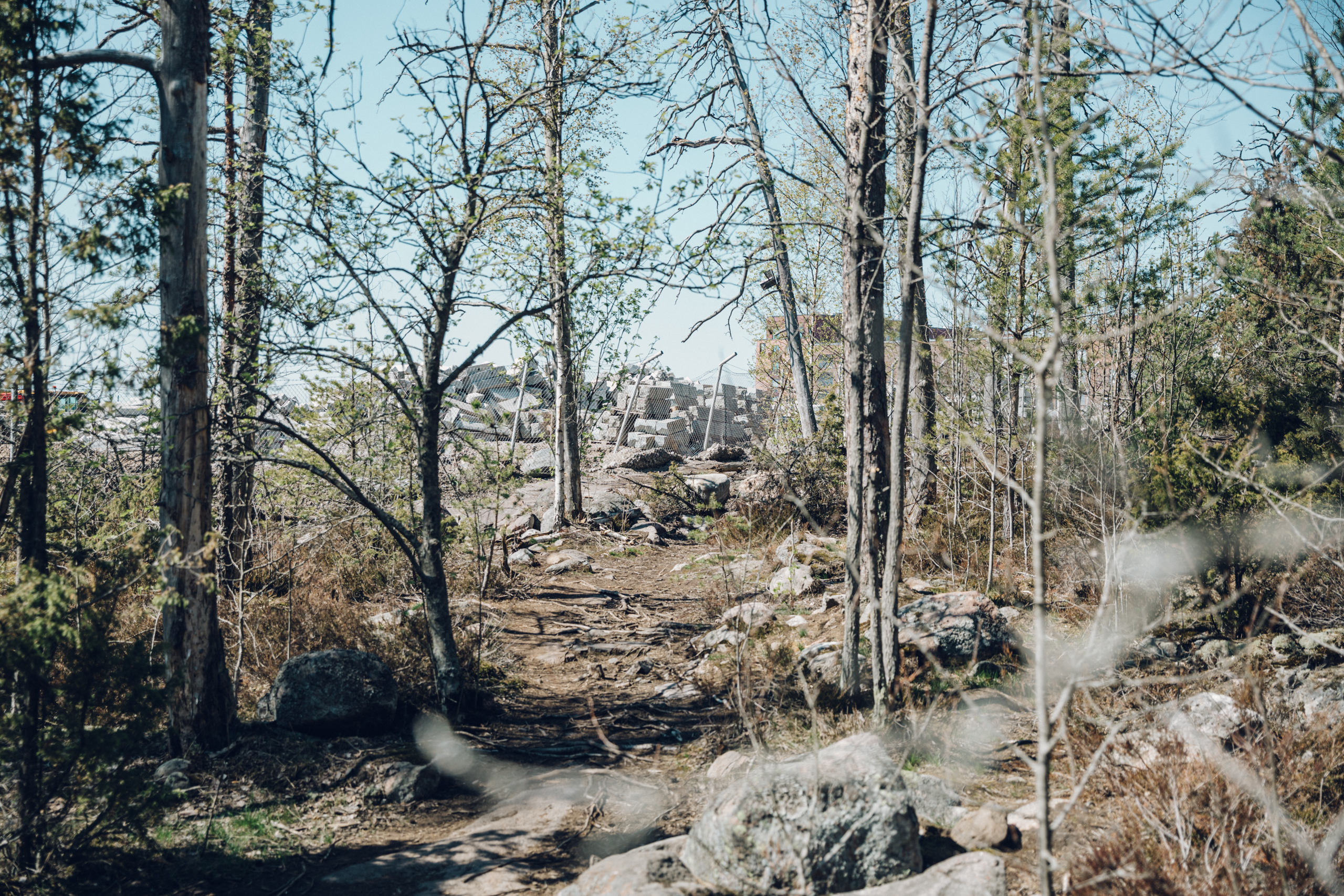News
IHME Helsinki 2023 4/6: Stansvik forest and village

Chicago Boys in Stansvik forest and village
The fourth public rehearsal for IHME Helsinki 2023 Commission, Chicago Boys – While We Were Singing, They Were Dreaming, took place in Stansvik forest and village in Laajasalo, Helsinki.
Stansvik Manor is surrounded by a diverse forest and rocky area, and a battle has been fought to protect it since the beginning of the 21st century. Like Riistavuori forest, Stansvik’s old forest is threatened by Helsinki’s growth pressures and construction plans, even though the area contains endangered habitats and species protected by EU directives.
A long bridge and tram line are being built on the shore of Kruunuvuori, which needs users to cover its costs. This means large building-construction projects, with the forest cut down and the rock blasted to make way for them. At the same time, a valuable old forest protecting the diversity of urban nature – saved from logging precisely because it is in the city – would be lost.
The rehearsal began with a tour of the forest along the Stansvik nature trail, led by forest activist Ida Korhonen. According to Korhonen, there are trees in Stansvik that are more than 300 years old, and the area is one of the richest in species in the capital region. Cutting down a forest for use by the forest industry would be illegal, but when forest is felled to make way for construction, there is no problem. Korhonen wonders how, as with Stansvik, cutting down trees and destroying diverse nature can be considered illegal and unsustainable from one viewpoint, and yet even justified as a good and sustainable activity from another.

Korhonen says that building apartments in the city alongside public-transport connections is seen as benefitting the whole society. It is valued more highly than saving an old forest and nature that have been there for hundreds or even thousands of years. At the same time, it is forgotten that a healthy city and society also need a healthy forest and diverse nature. Korhonen cited compelling reasons for the protection and conservation of Stansvik forest: its rare, diverse natural habitats; its importance and the health benefits it provides to people living there; and the forest being the last non-commercial area within the city that is open to everyone.
How can we recognize an old, diverse forest? Korhonen urges us to pay attention to pine trees. In Finnish forests, we rarely find pine trees as thick as they are in Stansvik, since half of pines never grow to more than 7 cm in diameter. However, trunk thickness does not always indicate age, since pines growing in rocky areas can be small and still be hundreds of years old. We can recognize an old pine by its shield bark, which protects it from fire, for example, and by its bent, ramified branches. Red ring rot (Phellinus pini) also only grows on old pines.


Added to that, old forests have a lot of dead wood: upright dead pines, which still serve as important habitats and sources of nutrients for other species. When examining the well-being of a forest, it is worth looking for things that are strange, distorted, crooked and mutually different. It is also important to understand that in a forest everything is connected to everything, and one species cannot survive without another. This is where the forest industry, forest management and construction often go wrong.

During the tour, Korhonen emphasized that trees, for example, do not compete, but help and take care of each other. In forest management humans create competition because it blocks trees’ natural connection with each other. By saving only individual trees in clear-cut areas or in the gardens of buildings, the natural connection between species is broken. At the end of the tour, Korhonen has a strong message: We don’t have to take care of nature, but to let it take care of us.
The Chicago Boys amateur band’s rehearsal continued, talking and playing music in the 70-year-old Uusikylä at Stansvik cottage village community. The community residents who joined in the rehearsals said they are the third generation that spends its summers in the cottages. The fate of the forest scares them, and the noise from the construction sites during the day keeps that threat alive. When children are asked what should be saved from the forest, the answer is simply “the whole forest”.


The open rehearsals took place on a warm, sunny afternoon, playing, and singing Bella Ciao in Finnish, Chinese and Farsi, Aman hey Aman in Kurdish, and Tuuli se taivutti koivun larvan in Finnish. The Riistavuori rock tune played last week now turned into Stansvik rock. A new, Kalevala-inspired song about endangered mosses, was added, the lyrics written by one of the band members.



The next rehearsal will be from 18:00 to 21:30 on Saturday 20.5 in Matokallio forest and Myllykylä village hall. We will first get to know the endangered Matokallio forest, after which the rehearsal will continue with a shared meal, conversation, and playing music in Myllykylä’s village hall.


